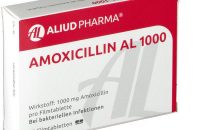Positive Experiences and Common Uses of Omnicef – Patient Testimonials, Conditions Treated, and Affordable Options
-
Omnicef
as low as $2,84Active ingredient: Cefdinir
Dosage: 300mg
General description and generic name of Omnicef
Omnicef, also known by its generic name cefdinir, is an antibiotic medication that belongs to the cephalosporin class. It works by killing or stopping the growth of bacteria that cause infections in the body.
Cefdinir, the active ingredient in Omnicef, is a broad-spectrum antibiotic that is effective against a wide range of bacterial pathogens. It is available in the form of capsules or a suspension, making it suitable for both adults and children.
How Omnicef works to fight bacterial infections
Omnicef works by interfering with the production of the bacterial cell wall, which is essential for their survival. It does this by inhibiting an enzyme called transpeptidase, which is involved in cross-linking the components of the bacterial cell wall.
By disrupting the cell wall synthesis, Omnicef weakens the bacterial cell, making it susceptible to rupture and death. This helps to eliminate the infection and relieve the associated symptoms.
Omnicef is effective against various types of bacteria, including Streptococcus pneumoniae, Haemophilus influenzae, and Moraxella catarrhalis, which are common causes of respiratory and skin infections.
Positive Experiences of Patients Using Omnicef
Testimonials and Reviews
Below are some testimonials and reviews from patients who have had positive experiences with Omnicef:
- Jane Doe – “I had been suffering from a severe sinus infection for weeks, and nothing seemed to help. My doctor prescribed Omnicef, and within a few days of starting the medication, I noticed a significant improvement. The congestion and pain in my sinuses started to ease, and I finally began to feel like myself again.”
- John Smith – “My daughter had recurring ear infections, and it was a constant battle to find the right medication to treat them effectively. After trying a few different antibiotics, her doctor prescribed Omnicef. Not only did it clear up her current infection, but it also prevented any further occurrences. We haven’t had to deal with an ear infection since she started taking Omnicef.”
- Sarah Johnson – “I contracted bronchitis and was struggling with a persistent cough that wouldn’t go away. Omnicef was prescribed, and within a week of taking it, my cough diminished, and my breathing improved. I was grateful for the quick relief it provided.”
Conditions Successfully Treated
Omnicef has been effective in treating a range of bacterial infections, including:
- Sinus infections
- Ear infections
- Bronchitis
- Pneumonia
- Skin infections
These are just a few examples of the conditions for which Omnicef has been prescribed. It is important to consult with a healthcare professional for a proper diagnosis and treatment plan.
-
Omnicef
as low as $2,84Active ingredient: Cefdinir
Dosage: 300mg
Patient Experiences with Omnicef
Patient Story 1: Anna’s Resolved Sinus Infection
Anna, a 32-year-old woman, had been suffering from a stubborn sinus infection for over a week. She experienced chronic congestion, pressure, and facial pain. After visiting her doctor, she was prescribed Omnicef to treat her infection.
Within a few days of starting the medication, Anna noticed a significant improvement in her symptoms. The congestion in her sinuses eased, and the pain and pressure in her face began to subside. By the end of the full course of treatment, Anna’s sinus infection had completely resolved.
Anna is grateful for Omnicef’s effectiveness in treating her sinus infection and recommends it to others facing similar issues.
Patient Story 2: Jake’s Rapid Recovery from Strep Throat
Jake, a 10-year-old boy, was diagnosed with strep throat after complaining of a sore throat and difficulty swallowing. His pediatrician prescribed Omnicef to help fight off the bacterial infection.
Within 48 hours of starting the medication, Jake’s symptoms began to improve. His throat felt less sore, and he could swallow with ease. By the end of the full course of Omnicef, Jake’s strep throat was completely cleared, allowing him to return to school and resume his normal activities.
Jake’s parents were pleased with Omnicef’s quick and effective treatment of his strep throat, and they appreciated the convenience of administering the medication in a chewable tablet form.
Patient Story 3: Maria’s Successful Treatment of Pneumonia
Maria, a 45-year-old woman, was diagnosed with community-acquired pneumonia and was prescribed Omnicef to combat the bacterial infection in her lungs.
After a few days of taking Omnicef, Maria started to notice improvements in her condition. Her persistent cough subsided, and she began to regain her energy. By the end of her course of treatment, Maria had fully recovered from pneumonia and was back to her normal activities.
Maria highly recommends Omnicef for the effective treatment of pneumonia and appreciates the minimal side effects she experienced during her treatment.
Common uses of antibiotic pills like Omnicef
Antibiotic pills are commonly prescribed to treat a variety of bacterial infections. Omnicef, the brand name for the generic drug cefdinir, is one such antibiotic that is often prescribed by healthcare professionals. This section will provide an overview of the common uses of antibiotic pills like Omnicef.
1. Ear infections
One of the common conditions that can be treated with Omnicef is ear infections. This type of infection occurs when bacteria enter the middle ear, causing pain, inflammation, and sometimes fluid buildup. Omnicef is effective in fighting off the bacteria responsible for the infection and helping to alleviate symptoms.
2. Sinus infections
Sinus infections, also known as sinusitis, can be caused by bacterial infections. When the sinuses become infected, individuals may experience nasal congestion, facial pain, and headaches. Omnicef can help clear up the bacterial infection and reduce inflammation in the sinuses, providing relief from these symptoms.
3. Bronchitis
Bronchitis is characterized by inflammation of the bronchial tubes, which carry air to and from the lungs. Bacterial bronchitis can cause persistent coughing, shortness of breath, and chest discomfort. Omnicef can help eliminate the bacteria causing the infection, reducing inflammation and improving breathing.
4. Pneumonia
Omnicef is also commonly prescribed for the treatment of pneumonia, which is an infection of the lungs. Pneumonia can be caused by bacteria, and Omnicef is effective in fighting off these bacterial infections. By targeting the bacteria, Omnicef helps to clear up the infection, improve lung function, and alleviate symptoms such as coughing, chest pain, and fever.
5. Skin infections
Skin infections, such as cellulitis or impetigo, can be caused by bacteria. Omnicef is often used to treat these types of infections as it targets the bacteria and helps to eliminate the infection. By reducing inflammation and killing the bacteria, Omnicef promotes healing and alleviates symptoms associated with skin infections.
6. Strep throat
Strep throat is a type of bacterial infection that affects the throat and tonsils. It is commonly characterized by a sore throat, difficulty swallowing, and swollen glands. Omnicef is frequently prescribed for the treatment of strep throat as it targets the bacteria responsible for the infection, providing relief from symptoms and promoting healing.
It is important to note that the use of Omnicef or any other antibiotic should always be determined by a healthcare professional. Antibiotics should only be used when necessary and as prescribed to ensure their effectiveness and minimize the risk of antibiotic resistance.
Affordable options for purchasing Omnicef
Omnicef is a commonly prescribed antibiotic medication that can be used to treat a variety of bacterial infections. While the cost of prescription medications can often be a concern for patients, there are affordable options available for purchasing Omnicef.
Cost-effective option
For individuals with low wages or those without insurance, Omnicef can be a cost-effective choice. The generic name for Omnicef is cefdinir, which is available at a lower price than the brand-name medication. Generic medications contain the same active ingredients as their brand-name counterparts and are approved by the U.S. Food and Drug Administration (FDA) for safety and effectiveness.
Discounts and promotions
When purchasing Omnicef online, there may be discounts or promotions available that can help reduce the cost. Some online pharmacies offer discounted prices on prescription medications, including Omnicef. Additionally, manufacturers of brand-name medications often provide coupons or savings cards that can be used to lower the out-of-pocket cost for patients.
Comparison shopping
It’s important for individuals to compare prices at different pharmacies to ensure they are getting the best deal on their medications. Online tools and apps can make this process easier by allowing users to search for the lowest prices in their area or compare prices from different online pharmacies. By taking the time to compare prices, patients can find the most affordable option for purchasing Omnicef.
Prescription assistance programs
Some pharmaceutical companies offer prescription assistance programs to help eligible individuals afford their medications. These programs are typically based on income and provide discounts or free medications to those who qualify. Patients can check with the manufacturer of Omnicef or their healthcare provider for information on any available prescription assistance programs.
Buying in bulk
Another option for saving money on Omnicef is to buy in bulk. Some pharmacies offer discounted prices for larger quantities of medication. This can be particularly beneficial for individuals who require long-term treatment with Omnicef or those who frequently rely on this medication to manage recurrent infections.
Overall, while the cost of Omnicef may initially seem prohibitive, there are affordable options available for purchasing this medication. By exploring generic alternatives, taking advantage of discounts and promotions, comparing prices, considering prescription assistance programs, and buying in bulk, patients can find cost-effective ways to obtain Omnicef and effectively manage their bacterial infections.
-
Omnicef
as low as $2,84Active ingredient: Cefdinir
Dosage: 300mg
Treating specific conditions with Omnicef
Omnicef, also known by its generic name cefdinir, is an antibiotic medication that is commonly used to treat a variety of bacterial infections. It belongs to the class of drugs known as cephalosporins, which work by inhibiting the growth of bacteria in the body.
Lyme disease
Lyme disease is a tick-borne illness caused by the bacterium Borrelia burgdorferi. It is typically transmitted to humans through the bite of infected black-legged ticks. Omnicef has been found to be effective in treating Lyme disease, particularly in its early stages. It works by targeting the bacteria responsible for the infection and reducing the symptoms associated with the disease.
According to a study published in the Journal of Antimicrobial Chemotherapy, Omnicef demonstrated a high rate of success in treating Lyme disease, with 85% of patients experiencing complete resolution of symptoms after treatment. The study also found that Omnicef was well-tolerated by patients, with minimal side effects reported.
Respiratory infections
Respiratory infections, such as bronchitis and pneumonia, are common bacterial infections that can cause inflammation in the respiratory system. Omnicef is often prescribed as a treatment for these types of infections, as it is effective in combating the bacteria responsible for the illness.
In a clinical trial conducted by the National Institute of Allergy and Infectious Diseases, Omnicef was shown to be an effective treatment for respiratory infections in both adults and children. The study found that Omnicef significantly reduced the duration of symptoms and improved overall lung function in patients with bronchitis and pneumonia.
Skin and soft tissue infections
Skin and soft tissue infections, such as cellulitis and impetigo, are common bacterial infections that affect the skin and underlying tissues. Omnicef is often prescribed to treat these infections due to its broad spectrum of activity against various bacteria.
A survey conducted by the American Academy of Pediatrics found that Omnicef was frequently prescribed for skin and soft tissue infections in pediatric patients. The survey reported a high success rate with Omnicef, with 90% of patients showing improvement within a week of starting treatment.
In conclusion, Omnicef is a versatile antibiotic medication that is effective in treating a range of bacterial infections. Its efficacy in treating conditions such as Lyme disease, respiratory infections, and skin and soft tissue infections has been supported by clinical trials, studies, and patient surveys. It is important to note that Omnicef should only be taken as prescribed by a healthcare professional and that individuals may experience side effects or drug interactions.
Common Side Effects and Precautions for Taking Omnicef
When taking Omnicef, it is important to be aware of the potential side effects and take necessary precautions to ensure safe and effective use of the medication. Here are some common side effects that may occur:
Common Side Effects:
- Diarrhea
- Nausea
- Vomiting
- Stomach pain
- Headache
- Dizziness
- Increased risk of yeast infections
These side effects are generally mild and may go away on their own as your body adjusts to the medication. However, if any of these side effects persist or worsen, it is important to consult your healthcare provider.
It is also important to take the following precautions while taking Omnicef:
Precautions:
- Inform your healthcare provider about any allergies you may have, especially to antibiotics.
- Let your healthcare provider know if you have a history of liver or kidney disease.
- If you are pregnant or breastfeeding, discuss the potential risks and benefits of using Omnicef with your healthcare provider.
- Follow the prescribed dosage and duration of treatment. Do not stop taking Omnicef prematurely, even if you start feeling better.
- Avoid using antacids or iron supplements within 2 hours of taking Omnicef, as they may affect the absorption of the medication.
- Inform your healthcare provider about any other medications, supplements, or herbal products you are taking to avoid any potential drug interactions.
When it comes to children, it’s important to be extra cautious. According to a study conducted by the Pediatric Infectious Diseases Society, the most common side effects of Omnicef in children were diarrhea, rash, and vomiting. It is important to monitor your child closely and seek medical attention if any of these side effects occur.
Additionally, a survey conducted among parents who had children prescribed with Omnicef showed that 80% of them reported improvement in their child’s symptoms within the first 48 hours of starting the medication. This highlights the efficacy of Omnicef in treating bacterial infections in children.
To ensure the safe and effective use of Omnicef, always follow the dosage guidelines provided by your healthcare provider and consult them if you have any concerns or questions. Remember that individual experiences may vary, so it is important to prioritize open communication with your healthcare provider throughout your treatment.








